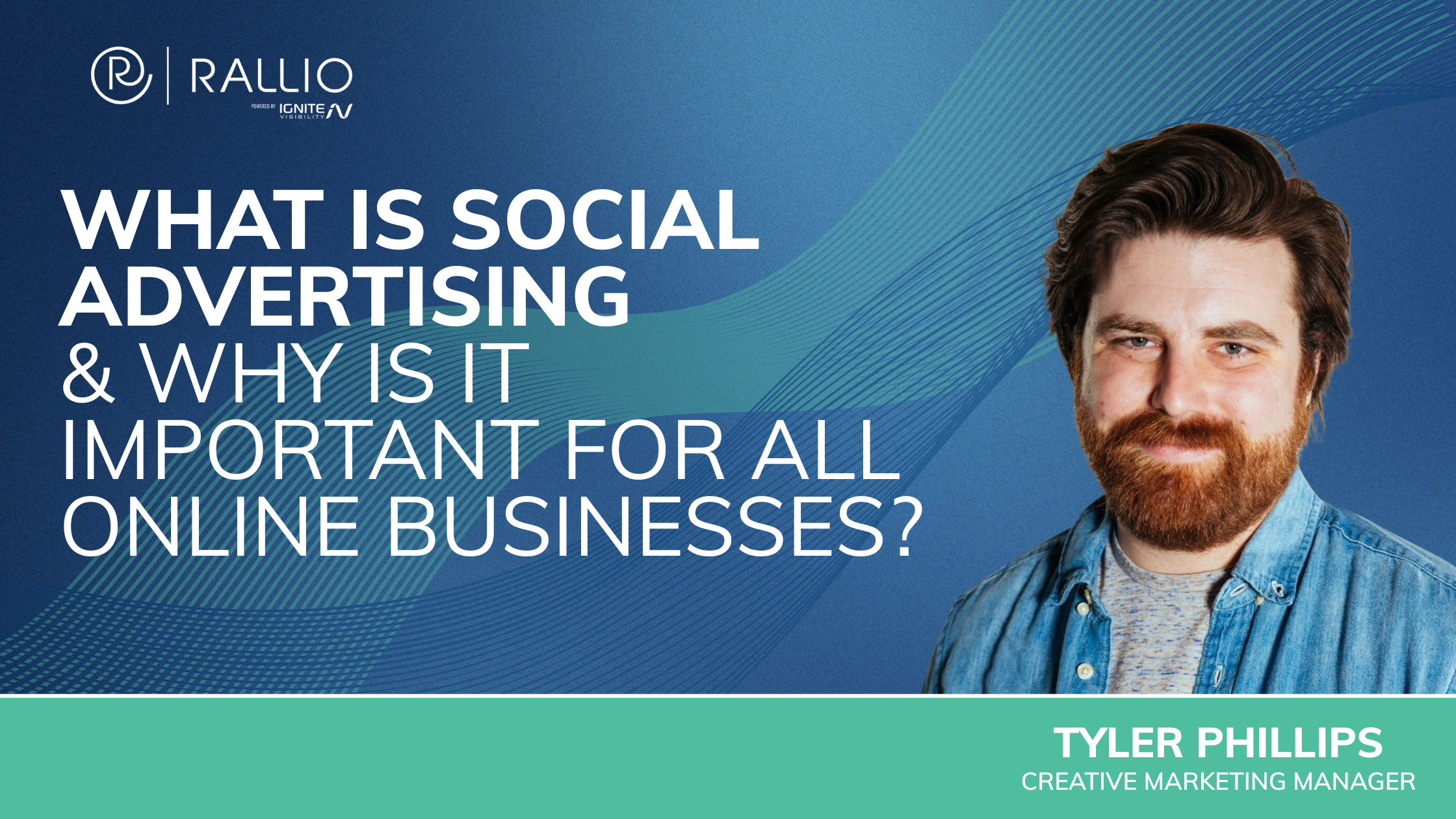 Marketing Automation
Marketing Automation
Social media is everywhere, and just about everyone is on one or more platforms today, reaching billions of people across the globe. Businesses that don’t target their audiences through this channel are missing out on a huge opportunity to establish and nurture a strong connection. In addition to general marketing, highly targeted social advertising can extend your reach and get you in front of the right audiences when they’re actively using their favorite apps.
In this blog post, (name + title) will go into why advertising on social media is so important, some of the key components of social ad campaigns, and how to advertise your business on social media with the right approach.
My Expert Opinion on Social Advertising
The majority of people today use social media in some capacity and on some platform. According to a recent Kepios report, there are currently around 5.31 billion social media users all over the world, which comes to 64.7% of the global population.
There’s a social media platform for everyone, regardless of age, location, or other characteristics. If you have a target audience, there’s a channel through which you can reach them.
While marketing on the right platforms can help you connect more personally with audiences through your profile, you should supplement these efforts with an ad strategy that helps you reach even more new audiences with hyper-targeted campaigns. Harnessing the power of paid social media and other advertising and marketing platforms, you can continually appeal to and convert more customers.
What Is Social Advertising?
Social advertising is a form of paid media advertising that involves promoting a brand, offering, or promotion on social media platforms. However, some definitions also specify that this form of advertising must be consensual for the user.
According to the Interactive Advertising Bureau, a social ad is “an online ad that incorporates user interactions that the consumer has agreed to display and be shared.”
There are many forms social media ads can take. For example, a brand could promote certain products using a carousel ad on Facebook, offering an interactive experience to engage its audiences.
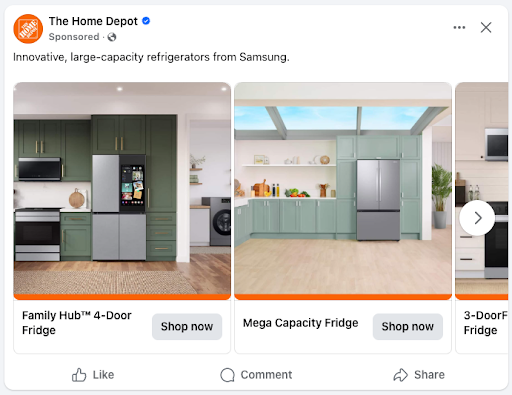
Meanwhile, other brands may connect with audiences on Instagram using video ads, such as mattress brand Lull Bed partnering with an influencer whose video of him installing a mattress is repurposed for ad content.

These social advertising examples touch the tip of the iceberg when it comes to the many ad platforms and formats you can use depending on your industry and audience.
Why Social Advertising Matters
Brands of all types can benefit from using paid social advertising, and it’s essential in helping them stay competitive today.
Recent statistics further demonstrate the importance of implementing social advertising campaigns: Statista reports that the total U.S. social media advertising spend will reach $95.70 billion in 2025, with Wordstream confirming that social ads comprise 33% of all digital ad spend and Sprinklr determining that 61% of American online consumers are likely to purchase products because of suggestions on social media.
In short, if you’re neglecting to advertise on social media, there is a huge gap you need to fill to connect with your audiences and maximize ROI.
Core Components and Best Practices
To get the best results from social media advertising, there are some aspects to consider, and you must take the right approach to your strategy.
5 Main Components of Social Advertising Campaigns
When building social media ad strategies, the following are the core components that will guide you along the process:
1. Campaign Goals
Before you can develop your strategy, you need to have specific objectives in mind that will inform your efforts.
There are multiple types of objectives you might set, such as boosting brand awareness, increasing engagement, and driving more conversions and sales.
Many platforms make it easy to set goals within their native ad campaigns.
For instance, Instagram allows you to set a variety of awareness, consideration, and conversion goals.
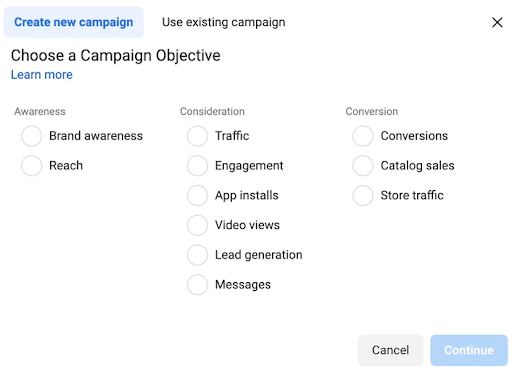
2. Target Audience
You also need to consider your target audience, which will dictate which platforms you use and the kinds of ads you run.
Think about the kinds of people you want to target, which could include people within your existing customer base or a new potential market.
Look at what your competitors are doing and consider developing audience personas that help segment your audiences based on different characteristics.
3. Creative Design
Once you’ve identified your target audience, you can begin developing the creative elements of your ads, which will consist of:
- A visual component, such as a video, image, or GIF
- The ad copy, including your headline, caption, and description
- A call to action to lead viewers to the next step
For instance, here is a clearly developed ad with rich copy explaining the benefits of signing up for The Great Courses, a visual complete with a promotion, and a call to action to sign up for the platform.

4. Ad Budget
Additionally, consider the budget you want to set for your ads.
So, how much does it cost to advertise on social media? It really depends on your overall marketing budget, your industry benchmarks, your ability to test and experiment, and, of course, the specific platform you’re using.
Two models to consider to help you calculate ad budget include cost-per-click (CPC) and cost per mille (CPM). CPC measures the cost that advertisers pay for every click on their ads, while the CPM is the cost per thousand (mille in Latin) impressions.
5. Analytics and Reporting
To determine how well your social advertising campaigns are performing, you need to conduct regular analytics and reporting.
The metrics and key performance indicators (KPIs) you track here will depend on the goals that you set at the beginning.
There are many metrics you might track, including views, impressions, click-through rate, engagement metrics like replies and “likes,” and CPC or CPM.
You can use a combination of native analytics platforms and other third-party tools to gain a complete picture of campaign performance.
Best Practices for Advertising on Social Media
In addition to the above aspects, here are some social advertising best practices that can fuel your strategy:
- Use A/B Testing: Before committing to any of your ads, run A/B tests that change out a single creative element in your ads, be it a visual, caption, description, or CTA. Depending on which performs best, you can determine which to use for your official campaign.
- Optimize for Mobile-First Advertising: Make sure your ads are formatted with mobile users in mind, as 99% of social media users are on mobile devices, according to Indectron. Make sure video and image sizes account for mobile along with your corresponding landing pages and website.
- Accommodate Platform Vibes: Different social media platforms have different vibes. For example, Facebook tends to be more casual, while LinkedIn is often highly professional, and Instagram and TikTok are overall among the more “fun” storytelling platforms. Understanding the tone each platform appeals to can inform the ads you run on it.
Platforms and Format Strategies
In learning how to advertise your company on social media, you need to know more about the various platforms and ad formats available to drive your campaigns.
Social Advertising Platforms
There is no shortage of social platforms for you to choose from, including:
- TikTok
- X (formerly Twitter)
- Snapchat
Each platform has its own distinct audience, making it important to make the right choice based on where your audience spends its time.
For example, Facebook is the most popular platform with over 3.065 billion users, with the majority of users being 25 to 34 and a large audience of boomers. Meanwhile, younger audiences like Gen Z will tend to visit platforms like Instagram and TikTok more frequently.
If you’re targeting professionals, you would likely target LinkedIn with your ads.
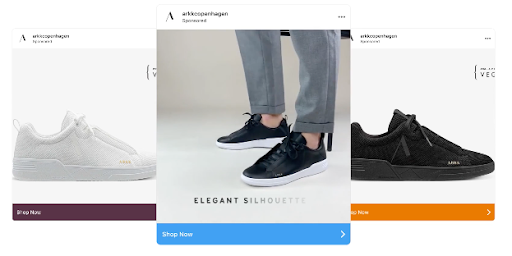
Available Formats
For all platforms, you can also choose different formats, such as:
- Image Ads: These ads are static in nature and tend to include a single image that connects with audiences, along with ad copy and a call to action.
- Video Ads: With the rising popularity of video content, especially short-form content, video ads are more engaging and are popular on most platforms.
- Carousel Ads: You may also want to use carousel ads to promote specific products, which are great for boosting sales and bringing people to your product pages.
- User-Generated Content: Partnering with influencers or holding contests among your audiences could lead to the production of user-generated content (UGC), which you could repurpose for ad content in many cases.
- Story Ads: Some platforms, like Facebook and Instagram, allow you to run Story ads that run between people’s videos on platforms like Instagram Stories.
- Banner Ads: People may also see certain message ads overlaid in video streams or other touchpoints, encouraging people to click.
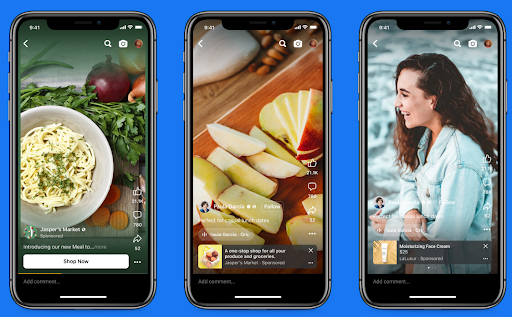
Audience Targeting and User Intent Alignment
When learning how to advertise your business on social media, you need to ensure your audience targeting aligns with user intent.
There are four main types of user intent, depending on where people are in the buyer’s journey:
- Informational: People want to learn more about a company and its products or services.
- Navigational: Individuals are looking for a particular web page belonging to a brand with which they’re familiar.
- Commercial: People might want to learn about the different options available to them when making a buying decision, such as “best companies near me.”
- Transactional: Here, the buyer is ready to make a purchasing decision with a particular brand.
Most ad content will appeal to the informational and transactional stages, as people either want more information about a brand or its offerings or are ready to make a purchase in many cases.
For instance, you might encourage people in the informational stage to click on an ad for more information about how your offerings could help them, leading them to a corresponding landing page rich with relevant details.
Meanwhile, carousel ads could push specific products based on users’ interests, enticing them to complete impulse buys in the transactional stage.
In the process, you will want to target relevant keywords at every stage. At the informational stage, for example, you would want to appeal to the need to “learn more,” including “tips for,” “how to,” and “benefits of,” among other top-of-funnel terms.
At the transactional stage, you would then appeal to the need to “buy,” “order,” “purchase,” and complete other bottom-of-funnel actions.
Be sure to map keywords based on intent, connecting them with the right ads and landing pages to move people along their journey. Also, align user intent with specific personas.
Taking this approach will help considerably with social ad targeting.
Content Gap Analysis: Spot and Fill Gaps
When developing social media ads, take a close look at your competitors and conduct an in-depth content gap analysis.
See what your competitors are doing with their ads, and identify any opportunities that might help you stand apart in your industry.
Find out how competitors are aligning their ads with the different intent along the buyer journey, and determine where you can streamline the journey even more. You might discover that your competitors aren’t touching on a certain pain point, or they’re neglecting to use effective messaging that might draw a particular audience segment.
To begin a content gap analysis, conduct audits against top-ranking pages to see what’s working and what isn’t, and map the customer journey.
In the process, you could use a table to make things clearer. For instance, the below template helps you list content gaps at every stage, along with pain points, goals, triggers, and other aspects to help optimize ad performance.
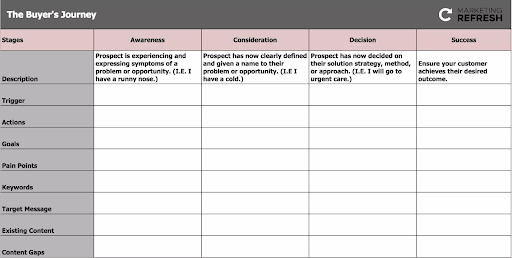
FAQs
1. What is social advertising?
Social advertising is the process of running paid ads on various social media platforms to reach target audiences. Ads can target users based on various factors, such as demographics, buying behaviors, interests, and location.
2. How does social advertising differ from influencer marketing?
While influencer marketing involves partnering with personalities through sponsorships to have them endorse your brand and offerings, ads bypass any relationship-building and involve bidding on ad space to target audiences in specific placements. However, you could use repurposed content created by influencers within your ads.
3. How much does it cost to advertise on social media in 2025?
Depending on the platform, the industry, and the placement, the cost of advertising on social media can vary greatly. It can range anywhere from hundreds to thousands of dollars per month. Determining how much you will spend on paid social advertising will depend on your budget and what you need to do to stay competitive in your industry.
4. What are best practices for social ad creative?
When creating content for your ads, you should know your audience and what kind of visuals and messaging they respond to on social platforms. Also, use compelling visuals and text that stand out while avoiding being misleading. Finally, include compelling calls to action that effectively drive more clicks and conversions.
Get the Most From Social Advertising with Rallio
To excel with your social advertising campaigns, it can require a lot of work and vigilance to stay ahead of competitors, especially if you need to manage campaigns across multiple platforms. With the help of Ignite Visibility’s social media marketing services, you can maximize your reach and connect with the right audiences at the right time. We can also integrate this service into a complete digital marketing strategy.
Here is some of what you can expect with our social advertising services:
- Market research and the development of user personas for segmentation
- Selection of the right platforms based on audience location
- High-quality creative design to ensure your ads connect
- Effective bidding strategies to help you get the most from your budget
- Continuous monitoring with detailed reports to fuel ongoing optimization
- And more!
Like this idea? Contact us today to request a free proposal and get started on your next campaign.
